|
When you are walking in Cambridge, think about three well known figures who walked these streets in the 19th century when many of them were ribbons of continuous brick: E. E. Cummings, Oliver Wendell Holmes, and James Russell Lowell. As previous blogs have discussed, since the late 1990s when Cambridge policy toward this unique heritage changed dramatically, the City has been busy transforming its brick sidewalk legacy in many ways (none of them good). Whole stretches of brick have been removed along Broadway, in East Cambridge, Cambridgeport, the Agassiz neighborhood, and others. Where wholesale removal of brick has not been the case, wide swaths of brick have been removed, even in the most sensitive historical areas, to install -- at taxpayer expense -- extensive, ugly, bright white ramps at virtually every street corner. Given the callous disregard for its brick sidewalk legacy that Cambridge has demonstrated in recent years, we thought it would be instructive to see what is going on both in New England and other, far-flung parts of our country related to the treatment of historical brick installations. This blog will focus on two nearby cities, Portland, Maine and Salem, Massachusetts, two communities that have taken a diametrically opposite approach to their brick sidewalks from that taken by Cambridge. It will also highlight briefly 12 other cities that have recently awakened to the importance and value of installed brick inherited from the past and are taking measures to preserve and enlarge those installations. In those parts of the country brick streets are more prevalent than brick sidewalks but citizens value them just as much. These 12 cities will be discussed in detail in a subsequent blog. Let’s start with Portland. The city has recently decreed that brick sidewalks will be preserved or installed in its designated historic districts. This policy shift has resulted in the removal of ugly concrete ramps previously installed in these districts. In their place are newly constructed wire-cut brick ramps of the very type we have been encouraging Cambridge to consider. Citizen groups are also involved in preserving the brick legacy. For example, the Kindling Fund in Portland ME has set aside $5,000 to stamp stories into bricks used to fill gaps in the brick sidewalks. The stories imprinted are those city residents deem significant, such as historical facts, individual memories, and future wishes for the city. Think how this artistic approach would add interest to Cambridge brick sidewalks for tourists visiting the city not to mention on regular historic tours given in the city. Here are three photos of Portland brick sidewalks in its fabled historic district reflecting that city’s care and preservation of them. Salem is another city that has been careful with its historical brick sidewalks as can be seen from the two photos below taken at the Visitor Center and near the Peabody-Essex Museum across the street. In addition to these two local cities, the drive to revive and preserve
brick streets and/or sidewalks inherited from past times has recently occurred in many places across the United States. A few of them are highlighted below. Champaign, Ill. Ban paving over brick. Spend $100K to maintain brick streets. Winter Park, FL. Removed layer of tar previously installed over brick streets. Cumberland, MD. Expanded brick street preservation another 6 square miles. Brooksville, FL. Removed pavement to expose brick streets. Amarillo, TX. Spend $200K to restore one block of brick street. Plan to do more. Blair, NEB. Shelved plan to pave over city's dilapidated brick streets with asphalt. Bedford, OH. Historic brick streets kept after it was proved the town could save money in maintenance over long run. Davenport, OK. Citizens up in arms over plan to pave over the bricks on main street. Showdown averted when money for project dried up. Wilmington, NC. Tests process to uncover brick streets. Blairsville, GA. "Preserving the Past for the Future." Tampa, FL. Fight to preserve brick streets. Houston, TX. Work stopped to remove bricks from street for utility work. Money was earmarked by Federal Government to preserve bricks. Going to court averted. So what are the lessons to be learned for Cambridge from this activity in our region and across the country? Preserving brick sidewalks preserves as well our link to the past -- and adds immeasurably to the unique character of our city. And, we now know that this can be done as in Portland without compromising the ease and comfort of the disabled who travel the sidewalks through the use of wire-cut bricks for ramps. Wire-cut bricks cause less vibration than concrete and hold up better over time. Also, unlike with concrete, bricks do not manifest the problem of entire slabs being up thrust by growing roots. I hope that you are enjoying your summer and that if you have photos of beautiful brick sidewalks you have encountered in our region or on your travels, please send them along. Regards, Diane Whitney Beck
0 Comments
Leave a Reply. |
AuthorDiane W. Beck
VP and Board Member Archives
December 2019
Categories |
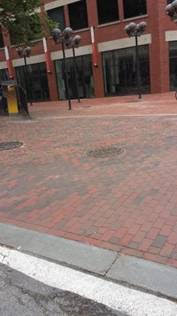
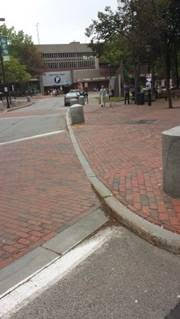
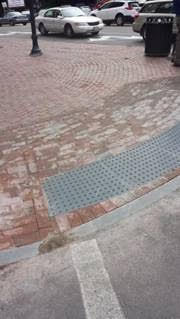
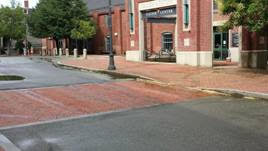
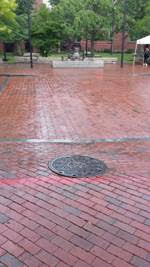
 RSS Feed
RSS Feed